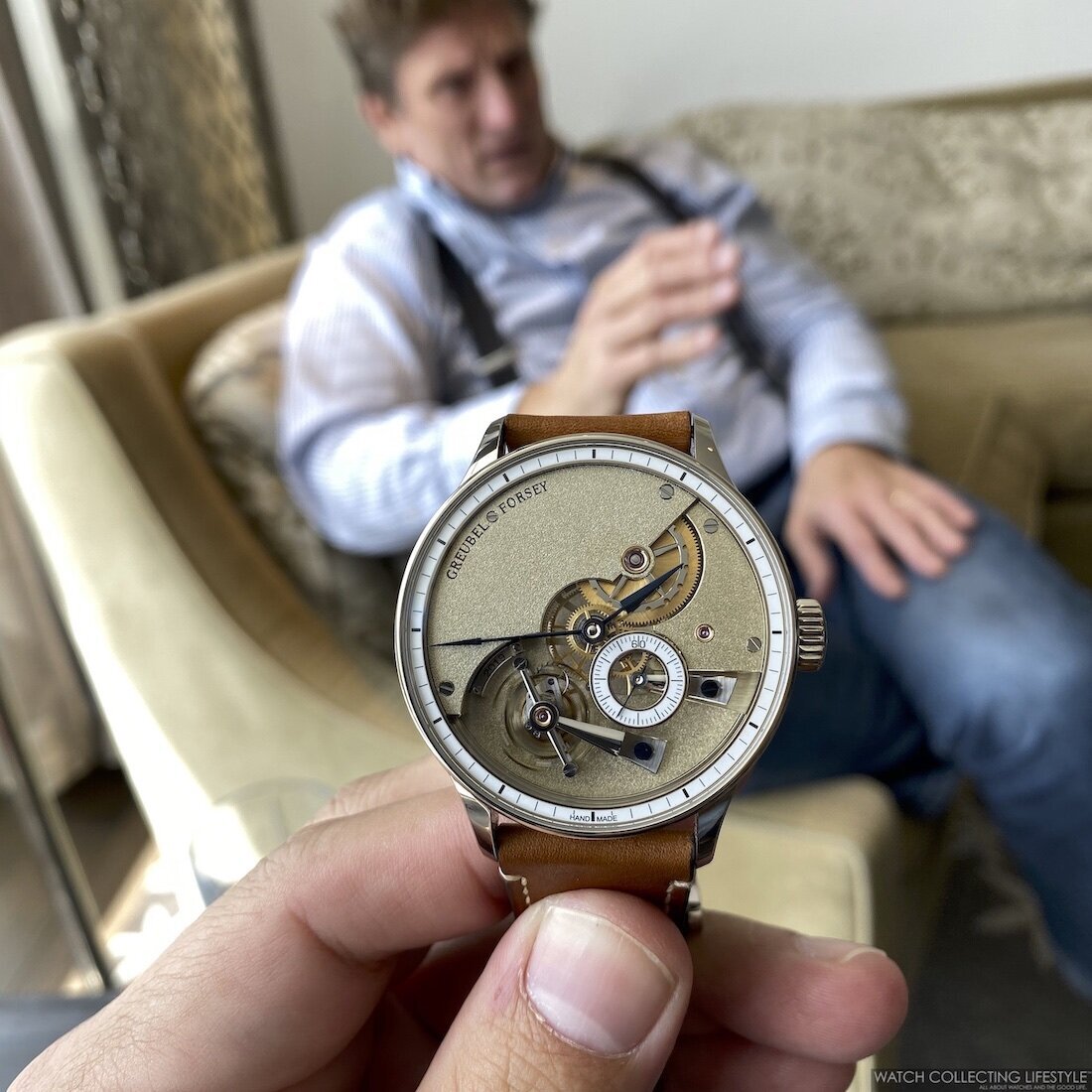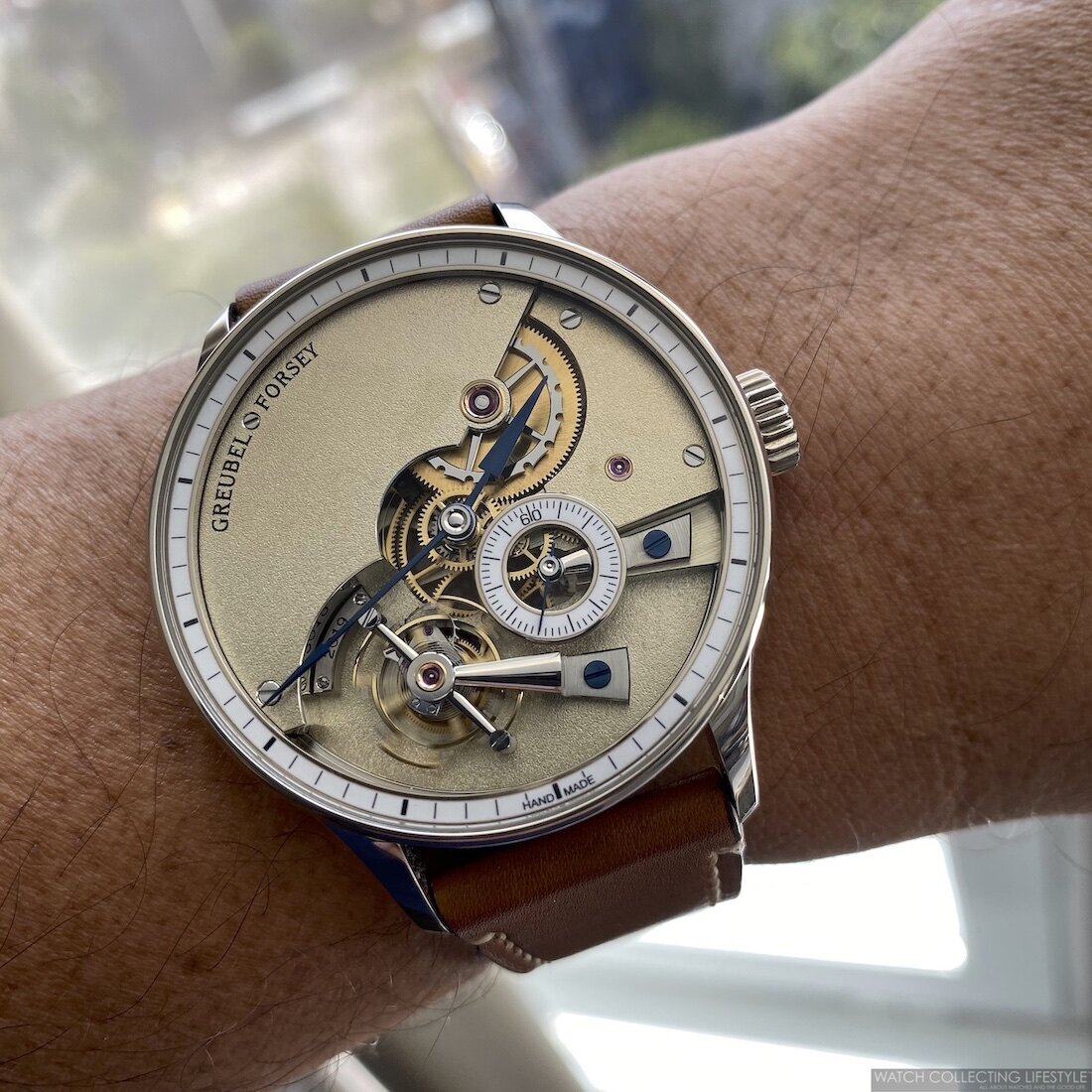As the Founder and Editor-in-Chief of WCL, I have countless stories of challenging watch photoshoots or photoshoots going wrong. What could be my worst nightmare as a watch photographer? That my lens would break inadvertently or that I would drop my camera right before the shoot? Well, neither of them. The worst and most unexpected thing to happen was to forget my camera’s memory cards 1,100 miles away right before meeting with Stephen Forsey in Mexico City.
After flying from Dallas to Mexico City, I headed straight from the airport to the St. Regis Hotel where I would be meeting with Stephen Forsey. Not only this was a very important meeting because a new watch was about to be unveiled but WCL also had the exclusivity as the only media outlet allowed to take live pictures of the Greubel Forsey Hand Made 1 that was about to be launched the morning after.
As I was getting ready to shoot the watch, I turned my camera on and then realized I had no memory card in it. Heading out of the hotel in order to try to find an electronics store was no option. I was given 30 minutes to shoot the watch, so there was no time and no stores nearby. I was really worried and stressed like you have no clue.
But since the only other photo equipment I had with me was the just-released —at the time— new iPhone 11 Pro Max, I decided to give it a try and see if I could save the day. Ultimately, there was really no other option and I couldn’t pass on the opportunity to be the only media outlet allowed to shoot the watch before its launch. After apologizing to Stephen and his team for my forgetfulness, I decided to give my iPhone a try.
All the images in this article were exclusively captured with an iPhone 11 Pro Max and no loupe system attachments or any other magnifying tools were utilized for the shoot. Now, let me tell you everything about the Greubel Forsey Hand Made 1 and enjoy the pictures. Hopefully, you will agree with me that they did turn out really well.
The Greubel Forsey Hand Made 1 has been entirely created from scratch. The movement construction, traditional machining, and hand-finishing specialists reflected at length on each of the 272 movement components and 36 case parts, understanding and concentrating on what the hand-made approach allows and how to get the very best out of it. The Hand Made 1, therefore, demanded a total overhaul of the creative process, involving the people who would make and decorate each component from the very beginning. The timepiece’s relatively modest dimensions —43.5 mm in diameter and 13.5 mm thick— further heightened the difficulty of this task.
The open dial stands out with its hand-enameled chapter rings, paired with elegant, finely shaped flame-blued steel hands. Naturally, the 18k white gold case is also, handmade, thanks to a pantograph mechanical lathe fitted with turning tools, before being patiently satin-finished on the sides and polished on the upper surfaces.
To obtain the 308 components of the Hand Made 1 respecting Greubel Forsey criteria, over 800 individual parts had to be made. It took almost 35 times longer to make the complete tourbillon cage than for a standard high-end tourbillon. When just a dozen operations on an automatic lathe effortlessly yield some 500 screws, a single screw, as small as it may be, requires up to 12 individual operations taking up to 8 hours to make just one. Finally to hand-make one wheel of the Hand Made 1 takes 600 times longer than that of a high-end industrial wheel.
The journey began with the regulating organ, entirely produced by hand in Greubel Forsey’s workshops, including the balance spring, fashioned from an alloy in the Atelier. The balance spring is then rolled in a hand-operated rolling mill —without computer assistance—, a process that is certainly endangered know-how — only a few balance springs can be made at a time— whereas in contemporary industrial production, hundreds or thousands are automatically produced at once. The balance wheel is also entirely hand-made with an extraordinary standard of precision and finish. The escape wheel, with its 20 individually-cut teeth, each with four surfaces that are later ground, is a true tour de force. Meanwhile, the machining and finishes of the escape lever alone require a month and a half of work.
The hand-making of the tourbillon carriage —with its 69 components weighing a total of 0.521 g— represented another sizeable challenge, as it is not possible to replicate the same geometry of a CNC machine on a traditional jig borer. An increased number of parts are consequently required to form this exquisite, almost airborne mechanism.
All the movement’s components are of course then hand-finished true to the finest watchmaking tradition, including the bridges with their polished inner and outer vertical flanks, the unique “Gratté” mainplate, and the wheels with hand-polished bevels top and bottom —40 sharp internal angles for a five-spoke wheel.
Finally, an entirely handmade timepiece, from the movement to the case, to the leather strap, the dial, and the hands —the only exceptions being the sapphire crystals, the case gaskets, the spring bars, the jewels, and the mainspring. To achieve the 95% handmade level with such a high standard of excellence required an astronomical 6,000 hours of work for one single timepiece —the equivalent of three years man-hours, where this total time only takes into account the pure watchmaking— and not the creation and development time.
Ultimately, even as good as the iPhone pictures turned out to be, there’s nothing like experiencing a timepiece like this in the metal. After the crisis was aborted, I sighed and enjoyed taking a proper wristshot of a one-of-a-kind timepiece.
Sticker Price Upon Request. For more info on Greubel Forsey click here.


























